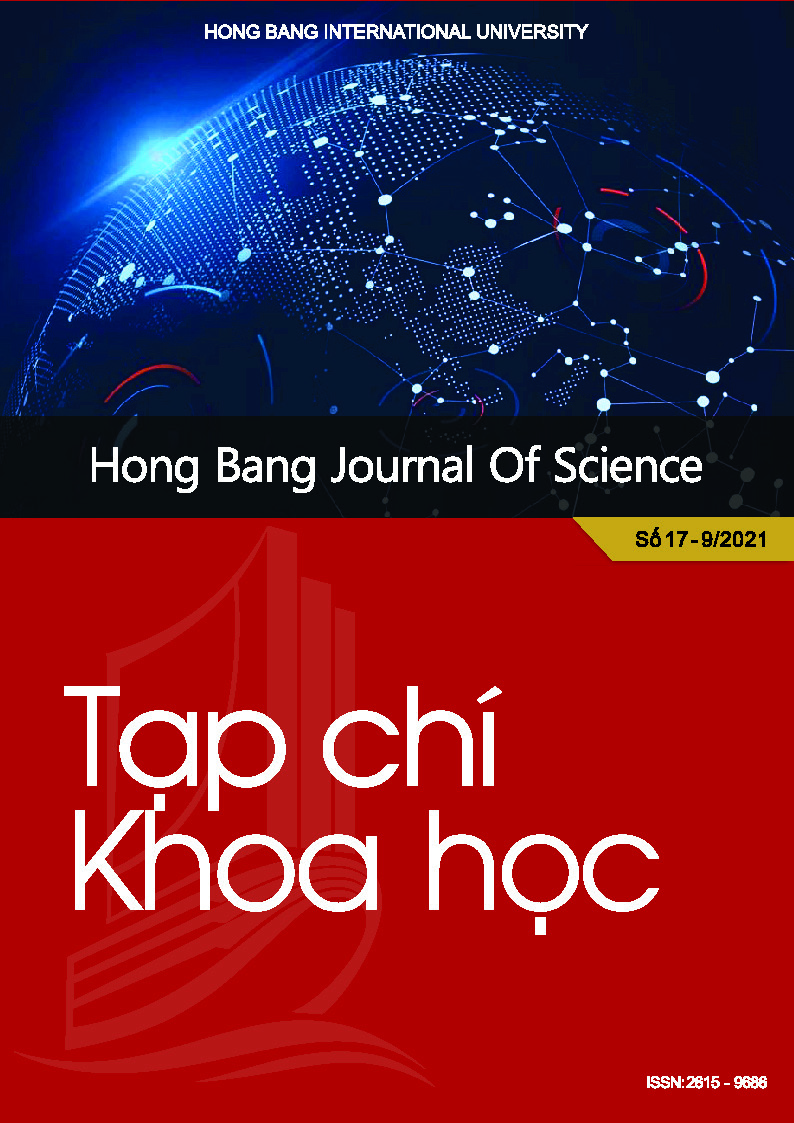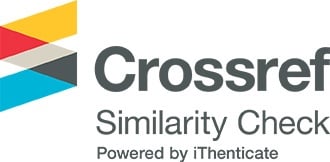Nhân tố ảnh hưởng đến sự hài lòng và ý định trở lại điểm đến du lịch thành phố Bạc Liêu của du khách nội địa
Các tác giả
Từ khóa:
Bạc Liêu, sự hài lòng, ý định trở lạiTóm tắt
Mục tiêu xác định các nhân tố ảnh hưởng đến sự hài lòng và ý định trở lại điểm đến du lịch thành phố Bạc Liêu của du khách. Kết quả phân tích dữ liệu bằng bảng câu hỏi khảo sát trực tiếp 390 khách du lịch, được xử lý thông qua các bước thống kê mô tả; kiểm định độ tin cậy của thang đo; phân tích nhân tố khám phá (EFA); phân tích nhân tố khẳng định (CFA) và phân tích mô hình cấu trúc tuyến tính (SEM) xác định được 05 nhân tố ảnh hưởng đến Sự hài lòng và Ý định trở lại của du khách theo mức độ giảm dần gồm: Môi trường văn hóa và tự nhiên; Cơ sở hạ tầng phục vụ du lịch; Cơ sở lưu trú; Dịch vụ ăn uống và giải trí; An ninh trật tự và an toàn.
Abstract
Objectives to determine the factors affecting the satisfaction and intention to return to tourist destination in Bac Lieu city of tourists. Results of data analysis by questionnaires directly survey 390 tourists, processed through descriptive statistics steps; verify the reliability of the scale; exploratory factor analysis (EFA); Confirmatory factor analysis (CFA) and linear structural model analysis (SEM) have identified five factors affecting the satisfaction and intention to return of tourists in decreasing order, including: Cultural and natural environment; infrastructure for tourism; Accommodation establishments; Catering and entertainment services; Security, order and safety.
Tài liệu tham khảo
[1] C. F. Chen and D. Tsai, “How destination image and evaluative factors affect behavioural intentions?”, Tourism Management, vol. 4, no. 28, pp. 1115-1122, 2007.
[2] S. Baloglu and K. W. McCleary, "A model of destination image formation", Annals of tourism research, vol. 4, no. 26, pp. 868-897, 1999.
[3] A. Beerli, G. Diza and D. J. Martin, "Tourist characteristics and the perceived image of tourist destinations: a quantitative analysis a case study of Lanzatoter Spain", Journal of Educational Administration, vol. 5, no. 25, pp. 623-636, 2004.
[4] Q. Hailin, K. Lisa and H. I. Holly, "A model of destination branding: Integrating the concepts of the branding and destination image", Tourism Management, vol. 32, no. 2001, pp. 465-476, 2011.
[5] P. Nghi, "Du lịch Bạc Liêu tiếp nối những chặng đường phát triển. Truy cập ngày 20/5/2021 tại địa chỉ: https://dangcongsan.vn/tu-tuong-van-hoa/du-lich-bac-lieu-tiep-noi-nhung-chang-duong-phat-trien-558531.html.", 2020.
[6] Bộ Văn hóa Thể thao và Du lịch, "Bạc Liêu phát triển du lịch trở thành ngành kinh tế quan trọng. Truy cập ngày 20/5/2021 tại địa chỉ: https://bvhttdl.gov.vn/bac-lieu-phat-trien-du-lich-tro-thanh-nganh-kinh-te-quan-trong-20210201155709975.htm.", 2021.
[7] P. Lynch and R. Tinsley, "Small tourism business networks and destination deve-lopment", Hospitality Management, vol. 4, no. 20, pp. 367-378, 2001.
[8] V. Briciu, "Differences between place branding and destination branding for local brand strategy development. Bulletin of the Transilvania University of Brașov", Series VII: Social Sciences, vol. 6, no. 55, pp. 9-14, 2013.
[9] R. J. Markin, "Consumer behavior; a cognitive orientation by Rom J. Markin. Jr", 1974.
[10] J. L. Crompton, "Motivations for pleasure vacation", Annals of tourism research, vol. 4, no. 6, pp. 408-424, 1979.
[11] W. C. Gartner and J. D. Hunt, "An analysis of state image change over a twelve-year period", Journal of Travel Research, vol. 2, no. 26, pp. 15-19, 1987.
[12] E. B. Rubies, "Improving publicprivate sectors cooperation in tourism: a new paradigm for destinations", Tourism Review, vol. 3/4, no. 56, pp. 38-41, 2001.
[13] L. Cai, "Cooperative branding for rural destination," Annals of Tourism Research, vol. 3, no. 29, pp. 720-742, 2002.
[14] C. Blain, E. Stuart, J. R. Levy and B. Ritchie, "Destination Branding: Insights and Practices from Destination Management Organizations", Journal of Travel Research, vol. 4, no. 43, pp. 328-338, 2005.
[15] H. N. K. Giao và N. T. K. Ngân, "Tác động của hình ảnh điểm đến tới ý định quay lại của khách du lịch nội địa tại Bà Rịa - Vũng Tàu", Tạp chí Kinh tế - Kỹ thuật, vol. 1, pp. 1-13, 2021.
[16] Y. Yoon and M. Uysal, "An examination of the effects of motivation and satisfaction on destination loyalty: a structural model", Tourism Management vol. 1, no. 26, pp. 45-46, 2005.
[17] Y. Hu and J. B. Ritchie, "Measuring destination attractiveness: A contextual ap-proach", Journal of travel research, vol. 2, no. 32, pp. 25-34, 1993.
[18] N. T. Nhân, "Đánh giá mức độ hài lòng của du khách nội địa đối với du lịch miệt vườn vùng Đồng bằng sông Cửu Long", Tạp chí Khoa học Đại học sư phạm thành phố Hồ Chí Minh, no. 52, pp. 44-55, 2013.
[19] M. N. Khương và N. T. Trinh, " Factors Affecting Tourists' Return Intention towards Vung Tau City Vietnam-A Mediation Analysis of Destination Satisfaction", Journal of Advanced Management Science, vol. 3, no. 4, pp. 292-298, 2015.
[20] H. H. Tựu và T. T. Á. Cẩm, "Ý định quay lại và truyền miệng tích cực của du khách quốc tế đối với TP. Nha Trang", Tạp chí Phát triển Kinh tế, Đại học Kinh tế TP. HCM, no. 262, pp. 53-60, 2012.
[21] M. N. Khương và N. P. Anh, "Factors Affecting Tourist Destination Satisfaction and Return Intention - A Study in Ho Chi Minh City Vietnam", Journal of Economics. Business and Management, vol. 2, no. 5, pp. 95-102, 2017.
[22] H. L. T. Trang và P. T. K. Loan, "Các yếu tố quyết định sự hài lòng và sự sẵn lòng quay lại của khách nội địa đối với du lịch Sóc Trăng", Tạp chí Khoa học Trường Đại học Cần Thơ, vol. b, no. 23, pp. 162-173, 2012.
[23] P. Murphy, M. Pritchard and B. Smith, "The destination product and its impact on traveller perceptions", Tourism Management, vol. 1, no. 21, pp. 43-52, 2000.
[24] B. Prideaux, "The role of the transport system in destination development", Tourism Managemen, vol. 1, no. 21, pp. 53-63, 2000.
[25] B. Narayan, C. Rajendran and L. P. Sai, "Scales to measure and benchmark service quality in tourism industry," Benchmarking: An International Journal., 2008.
[26] V. A. Zeithaml and M. J. Bitner", Service Marketing. New York. N.Y: Mcgraw-Hill," 1996.
[27] C. K. Lee, "A structural model for examining how destination image and interpretation services affect future visitation behavior: A case study of Tao mi ecovillage", Journal of sustainable Tourism, vol. 6, no. 17, pp. 727-745, 2009.
[28] J. L. Nicolau and F. J. Mas, "The influence of distance and prices on the choice of tourist destinations: The moderating role of motivations", Tourism Management, vol. 5, no. 27, pp. 982-996, 2006.
[29] K. S. Chon, "The role of destination Image in Tourism: A review and discussion", Tourism Review, vol. 2, no. 45, pp. 2-9, 1990.
[30] R. L. Oliver, "A cognitive model of the antecedents and consequences of satisfaction decisions", Journal of Marketing Research, vol. 4, no. 17, pp. 460-469, 1980.
[31] A. Pizam, Y. Neumann and A. Reichel, "Dimentions of tourist satisfaction with a destination area", Annals of tourism Research, vol. 3, no. 5, pp. 314-322, 1978.
[32] I. Ajzen and M. Fishbein, "Understanding attitudes and predicting social behavior. Englewood Cliffs. NJ: Prentice-Hall.", 1980.
[33] C. Chi and H. Qu, "Examining the Structural Relationships of Destination Image. Tourist Satisfaction and Destination Loyalty: An Integrated Approach", Tourism Management, vol. 4, no. 29, pp. 624-636, 2008.
[34] D. D. Gremler and S. W. Brown, "Service loyalty: its nature. importance. and im-plications", Advancing service quality: A global perspective, vol. 1, no. 5, pp. 171-181, 1996.
[35] A. Chaudhuri, "Does brand loyalty mediate brand equity outcomes?", Journal of Marketing Theory and Practice, vol. 2, no. 7, pp. 136-146, 1999.
[36] J. Bigne, M. Sánchez and J. Sánchez, "Tourism Image. Evaluation Variables and After Purchase Behaviour: Inter-Relationship", Tourism Management, vol. 6, no. 22, pp. 607-616, 2001.
[37] M. Kozak and M. Rimmington, "Tourist satisfaction with Mallorca Spain as an off-season holiday destination", Journal of travel research, vol. 3, no. 38, pp. 260-269, 2000.
[38] Đ. P. Hổ và Đ. T. V. Ngọc, "Ảnh hưởng hình ảnh điểm đến du lịch đến hài lòng và ý định viếng thăm lại Thành phố Phan Thiết: Cách tiếp cận mô hình cấu trúc tuyến tính", Tạp chí Công thương, no. 4, 2020.
[39] D. Mazursky, "Past experience and future tourism decisions", Annals of Tourism Research, vol. 3, no. 16, pp. 333-344, 1989.
[40] B. Court and R. A. Lupton, "Customer portfolio development: Modeling destination adopters inactives and rejecters", Journal of travel research, vol. 1, no. 36, pp. 35-43, 1997.
[41] R. Likert, "A Technique for the measurement of attitudes", Archives of Psychology, no. 140, pp. 5-53, 1932.
[42] J. F. Hair, W. C. Black, B. J. Babin, R. E. Anderson and R. Tatham, "Multivariate data analysis 6th ed. Uppersaddle River. In: NJ: Pearson Prentice Hall", 2006.
[43] R. E. Schumacker and R. G. Lomax, "Application of Structural Equation Modeling in Educational Research and Practice. Mahwah, NJ: Lawrence Erlbaum", 2006.
[44] H. Trọng và C. N. M. Ngọc, "Phân tích dữ liệu nghiên cứu với SPSS tập 1&2". Hà Nội: Nhà xuất bản Hồng Đức, 2008.
[45] J. C. Nunnally, "An overview of psychological measurement. Clinical diagnosis of mental disorders", pp. 97-146, 1978.
[46] S. A. Taylor, A. Sharland, J. J. Cronin and W. Bullard, "Recreational service quality in the international setting", International Journal of Service Industry Management, vol. 4, no. 4, pp. 68 - 86, 1992.
[47] D. Hooper, J. Coughlan and M. Mullen, "Structural equation modelling: Guidelines for determining model fit", Journal of Business Research Methods, vol. 1, no. 6, pp. 53-60, 2008.
[48] J. C. Anderson and D. W. Gerbing, "Structural equation modeling in practice: A review and recommended two-step approach. Psychological bulletin", vol. 3, no. 103, pp. 411-423, 1988.
[49] J. B. E. Steenkamp and H. C. Van Trijp, "The use of LISREL in validating marketing constructs", International Journal of Research in marketing, vol. 4, no. 8, pp. 283-299, 1991.
Tải xuống
Tải xuống: 339







